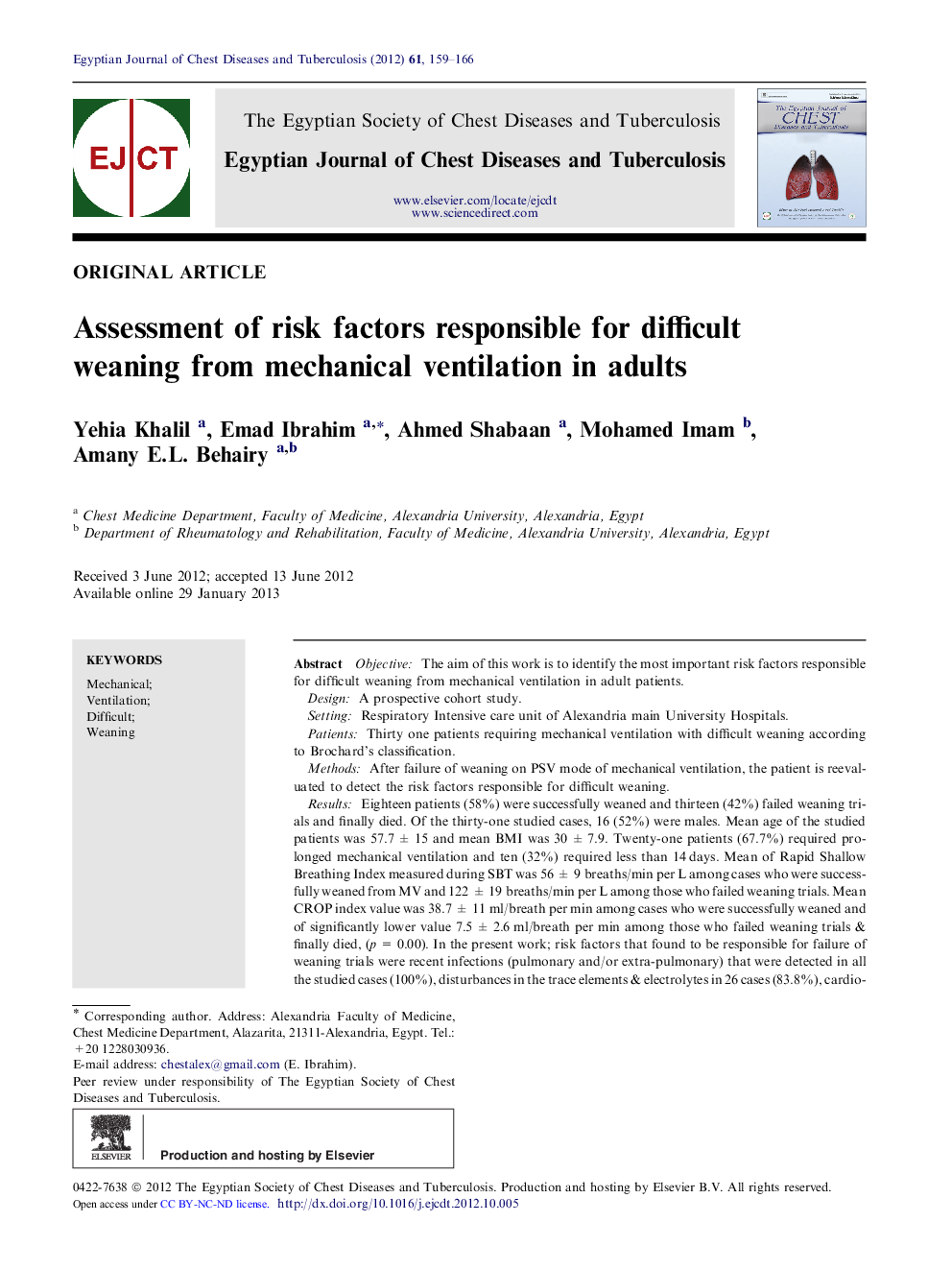| Article ID | Journal | Published Year | Pages | File Type |
|---|---|---|---|---|
| 3400397 | Egyptian Journal of Chest Diseases and Tuberculosis | 2012 | 8 Pages |
ObjectiveThe aim of this work is to identify the most important risk factors responsible for difficult weaning from mechanical ventilation in adult patients.DesignA prospective cohort study.SettingRespiratory Intensive care unit of Alexandria main University Hospitals.PatientsThirty one patients requiring mechanical ventilation with difficult weaning according to Brochard’s classification.MethodsAfter failure of weaning on PSV mode of mechanical ventilation, the patient is reevaluated to detect the risk factors responsible for difficult weaning.ResultsEighteen patients (58%) were successfully weaned and thirteen (42%) failed weaning trials and finally died. Of the thirty-one studied cases, 16 (52%) were males. Mean age of the studied patients was 57.7 ± 15 and mean BMI was 30 ± 7.9. Twenty-one patients (67.7%) required prolonged mechanical ventilation and ten (32%) required less than 14 days. Mean of Rapid Shallow Breathing Index measured during SBT was 56 ± 9 breaths/min per L among cases who were successfully weaned from MV and 122 ± 19 breaths/min per L among those who failed weaning trials. Mean CROP index value was 38.7 ± 11 ml/breath per min among cases who were successfully weaned and of significantly lower value 7.5 ± 2.6 ml/breath per min among those who failed weaning trials & finally died, (p = 0.00). In the present work; risk factors that found to be responsible for failure of weaning trials were recent infections (pulmonary and/or extra-pulmonary) that were detected in all the studied cases (100%), disturbances in the trace elements & electrolytes in 26 cases (83.8%), cardiovascular dysfunctions in 18 (58%), psychological problems in 12 (38.7%), endocrinal disturbances in the form of hypothyroidism in 3 (9.6%), nutritional deficiency in 27 (87%), neuromuscular dysfunctions in 14 (45%) and other additional co-morbid problems as hepatic or renal impairment in 15 patients (48%). In the present work; EMG & nerve conduction study was done to 19 cases with difficult weaning. The results showed 26% with normal picture, 63% with moderate to severe axonal sensory motor peripheral neuropathy and 10.5% with a picture of myopathy. Regarding the effect of neuromuscular dysfunctions on the outcome of MV, in the present study, 33% of the patients with polyneuropathy failed weaning trials and finally died (p = 0.798). The present study stresses on the importance of neuromuscular assessment in all cases with difficult weaning as this may be an important contributing factor for difficult weaning and prolonged mechanical ventilation.ConclusionAll potential causes of ventilator dependency should be identified when a patient is difficult-to-wean. Then, a plan should be developed that uses a multidisciplinary team approach to correct the reversible causes of weaning failure and facilitates weaning thereafter.
